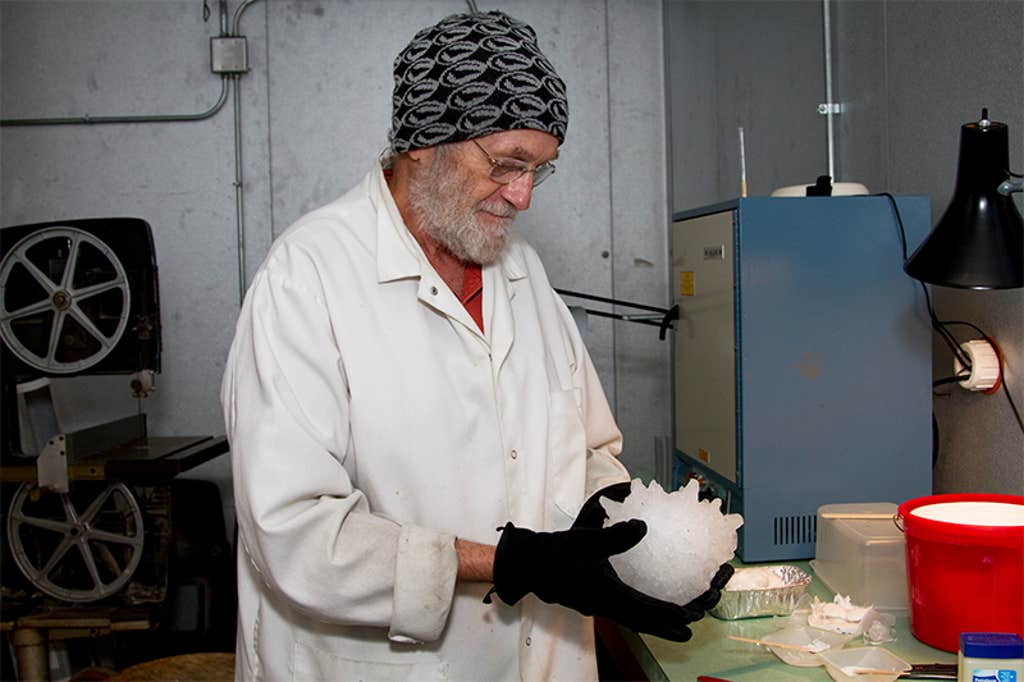This spring, storm-chasing scientists will scatter across more than a dozen states to hunt for hail. The falling ice does more than crush newly planted pansies: It pockmarks cars, shreds roofs, cracks solar panels, and crushes agricultural crops, which caused some $35 billion in damages last year in the United States. But predicting where and when these severe storms will land has proven a challenge, and large-scale field study of hailstorms has been largely on ice for decades.
To get a better read on how hailstorms work, the scientists and students will drive straight into potentially hail-producing storms from Montana to Minnesota to Texas, with scientific equipment in tow. The project, known as ICECHIP, will use 3-D laser-scanners to quickly model hailstones, mobile weather monitoring stations to better measure the storms, and devices called disdrometers to calculate the velocity and impact energy of falling hailstones. The teams of researchers will even use drones to drop models of hailstones into storms and track how they fall to better understand their dynamics.
Natural hail forms when updrafts in powerful storms whisk tiny water droplets higher into supercold areas of the atmosphere, where they freeze. These small hail embryos, as they are known, bounce around in the storm clouds, amassing more freezing water. The chaotic birthing process can give them irregular shapes and cloud their ice layers. Once they become heavy enough that gravity overcomes the upward thrust of the storm gusts, they fall to the ground.

Most hailstones that fall to Earth range in diameter from that of a pea to small pocket change. Once the diameter of a hail stone is equivalent to that of a quarter—about 1 inch—it is labeled “severe.” Scientists predict climate change will make larger hail more common, which could result in even costlier damages.
The new research project, which was funded by an $11 million grant from the National Science Foundation, aims to help improve scientists’ ability to predict severe hail-producing storms in the future. Like the one that dropped the largest hailstone ever measured in the U.S.
One summer evening 15 years ago in South Dakota, a particularly strong supercell thunderstorm formed near the small town of Vivian. One Vivian resident collected a giant hailstone from his yard measuring 8 inches in diameter and weighing nearly 2 pounds. The authors of a paper on the event extended their gratitude: We “would like to thank Les Scott for finding the record-breaking hailstone and not making a daiquiri out of it, as he originally intended.” Indeed, Scott, on second thought, reached out to the National Weather Service about his find instead, and the hailstone was rescued and saved for study.
But “could anyone have predicted the falling of such truly prodigious hailstones at a given location?” wondered William Monfredo, a professor of atmospheric and geographic sciences at the University of Oklahoma, who wrote another paper about the event for the Royal Meteorological Society’s journal Weather. Even if ICECHIP can’t crack that level of specificity, it might give far better warning than currently exists.
Anyone in the study area can join in the data collection effort. The researchers encourage people to send photos of hail to their local National Weather Service Office, next to a standard-sized object for reference. ![]()
Lead image: Lukas Jonaitis / Shutterstock
































